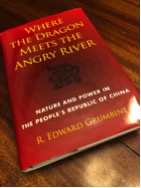A book review by Dr. Curt Gervich, of R. Edward Grumbine’s Where the Dragon Meets the Angry River: nature and power in the People’s Republic of China (Island Press, 2010).
“When an untamed river encounters a dragon, what happens next?”
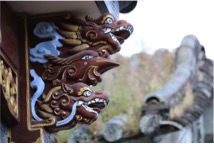
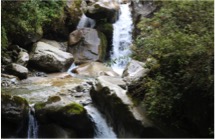
Caption: Dragons and Rivers in Yunnan Province, China.
That’s my favorite quote from R. Edward Grumbine’s Where the Dragon Meets the Angry River: nature and power in the People’s Republic of China (Island Press, 2010). The Angry River digs deep into the central questions that haunt conservation efforts in China and that form the central themes of the Middlebury School of the Environment’s curriculum in China. With years of experience in Yunnan, Grumbine explores topics such as how Yunnan is balancing the need for conservation with energy development; how rural communities in Yunnan are keeping pace with economic development in China while retaining rural character and culture; and how conservation efforts and policies can be effective in China against the backdrop of a wickedly complex bureaucratic governance structure that prioritizes economic development and centralized decision making above all else.
“China has never had a Henry David Thoreau, John Muir or Terry Tempest Williams. The country was shut off by the party from most international influences during the formative decades of the U.S. wilderness movement. Nature protection in China is rooted in a different soil.”
(Ed Grumbine, Where the Dragon Meets the Angry River: nature and power in the People’s Republic of China. Page 34.)
Not only does The Angry Dragon offer an in-depth perspective on environmental conservation in Yunnan Province, China– it also features many places students aboard the Middlebury School of the Environment may have the opportunity to experience in summer 2018. For example, Grumbine examines the urban development strategies of several communities in Yunnan, including Dali, Liejang and Kunming.
The Linden Centre, where MSoE is based when in Dali, is a 20 minute taxi ride from Dali’s historic old town. Here are some pictures of Dali’s historic centre from our recent planning trip:



Caption: Day and night in Dali.
Liejang is about 120 minutes north west of Dali and also has a preserved old town, though it’s quite different from Dali. Kunming is about six hour south, and is home to six million people. It will be fun for students to experience the social-ecological systems of all three places.
In Angry River Grumbine details the role of The Nature Conservancy in biodiversity conservation in Yunnan. Middlebury School of the Environment is in the process of developing a multi-day conservation boot camp with The Nature Conservancy in Yunnan. This experience will take place at TNC’s migratory waterfowl and wetland conservation project at West Caohai. Our collaboration will focus on TNC’s conservation planning process from start to finish. It will include problem identification and scoping, data collection and analysis, education and policy development. Here’s the link to TNC’s China website.
And a few pictures of our trip to the West Caihai wetland site:
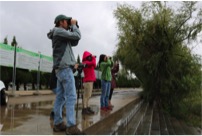

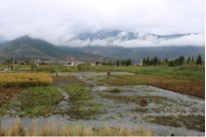
Caption: Middlebury and TNC staffers developing conservation boot camp at West Caohai.
Having returned from Yunnan in October and seen the sites and issues Grumbine details first hand, I have a few observations that I am excited to continue exploring with MSoE students in 2018. First, western China may be among the most under-appreciated and least well known biodiversity hotspots in the world. The eastern Himalayas contain an astounding array of ecosystems, rare and endemic species, and other gems. As Grumbine notes, the rivers that begin in this region drain an enormous percentage of Asia’s landmass, and are used by billions of people. That’s billions with a B. The geographic, social and economic scales of this place are of such a magnitude that they are difficult to comprehend. Second, Yunnan both reflects and rejects many of our assumptions about life in China, and the ways that social life is intertwined and dependent upon the environment. Finally, environmental professions and efforts in China are as varied and lively as anywhere. For example, environmental work in China is not only about biodiversity and energy– the functional areas we often hear about in the news. Environmental art, and sustainable food systems work are abundant and innovative. Here are some pics from a farm-to-table project we visited outside Dali:



Caption: Food systems innovations are as hot in Yunnan as in Middlebury Vermont. Farm-to-table experiments!
Environmental work is a grand experiment anywhere. It doesn’t matter if you’re in Vermont, on a college campus, or in China’s hinterlands. Yunnan province offers a new take on this experiment and is contributing to our growing body of knowledge in unique ways. Grumbine’s book has a lot to teach about conservation with Chinese characteristics.
R. Edward Grumbine is a professor of conservation biology at Prescott College. He also serves on the Middlebury School of the Environment advisory board.
